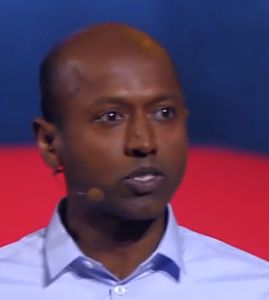Welcome to the first installment of Marketing Your Farm. Just to reiterate, here is the agenda I’m following:
- Who are you?
- Who are your customers?
- How can you reach them?
- What do you want say?
- How do you know that what you’ve said is working?
Today, I’m going to talk about you. Who are you and, most importantly, why are you doing what you do? Knowing “why” will bring you to “what” and “how” in later installments of this series. First, make sure you’ve watched Simon Sinek’s TED Talk on leadership.
Go ahead. I’ll wait…
“People don’t buy what you do. They buy why you do it.” Essentially, your communication plan needs to be based on your purpose for what you do. What drove you to start farming? Why do you raise livestock? Try to remember the first time you grew something. What was that feeling?
I remember the first time I ever rode a horse. I had been begging my mother for years to let me take lessons, since I’d seen horses and riders on television and I knew people who had horses. She finally agreed and one Saturday, I was standing in an arena holding the reins of a big dabbled palomino mare named Sun. I learned only the very basics that day, but spent the best hour of my 10-year-old life. When I had to leave, I cried all the way home. Knowing that I was going to have another lesson in just a week was no consolation. I wanted to be around horses all the time.
And now I have two. They make me very happy. Horses have been one of the main drivers of my life. I bought this little farm because of my horses.
Think about why. What’s the main thing that drives you? Is it the tastes of well-produced foods? Is it the healthy soil? Is it the community? Is it the health these foods provide? What caused you to start? Was it growing the perfect carrot? Take some time to consider this and write down the reasons. Usually, it’s much more of a feeling than it is a specific idea, so I know this can be difficult to capture. Just remember, it’s the one thing about your business that makes you happy. It’s unique to you.
Here are some examples:
- Adalyn Farm – a CSA farm in Stanwood WA: “Building community through food.”
- Apple – For Apple, it’s all about the design and usability. There’s not a saying that encapsulates it, but one of my friends suggested, “It just works.”
- TED Talks – “Ideas worth spreading.”
- Aspire Foundation – “Empowering women and girls.”
For next time, capture some of these ideas about why you do what you do on paper (computer program, post-it note, blackboard or whatever works for you). Don’t be detailed. Instead, capture your instinctive feelings. My favorite way of doing this is to think about it and then either go do something completely different or sleep on it. Capture your thoughts in writing (or, for those more artistic, try a drawing). We will revisit these ideas each time we work on the next steps. “The goal is to do business with people who believe what you believe.”
Also, watch Seth Godin’s TED Talk on The Tribes We Lead. Next time, we’ll talk about our customers and who they are.

